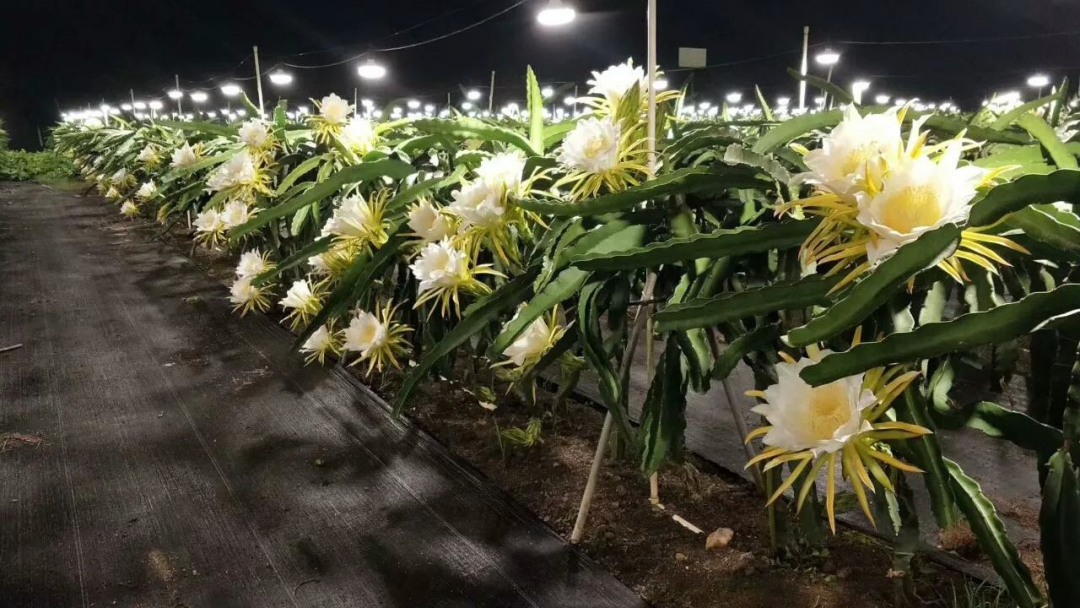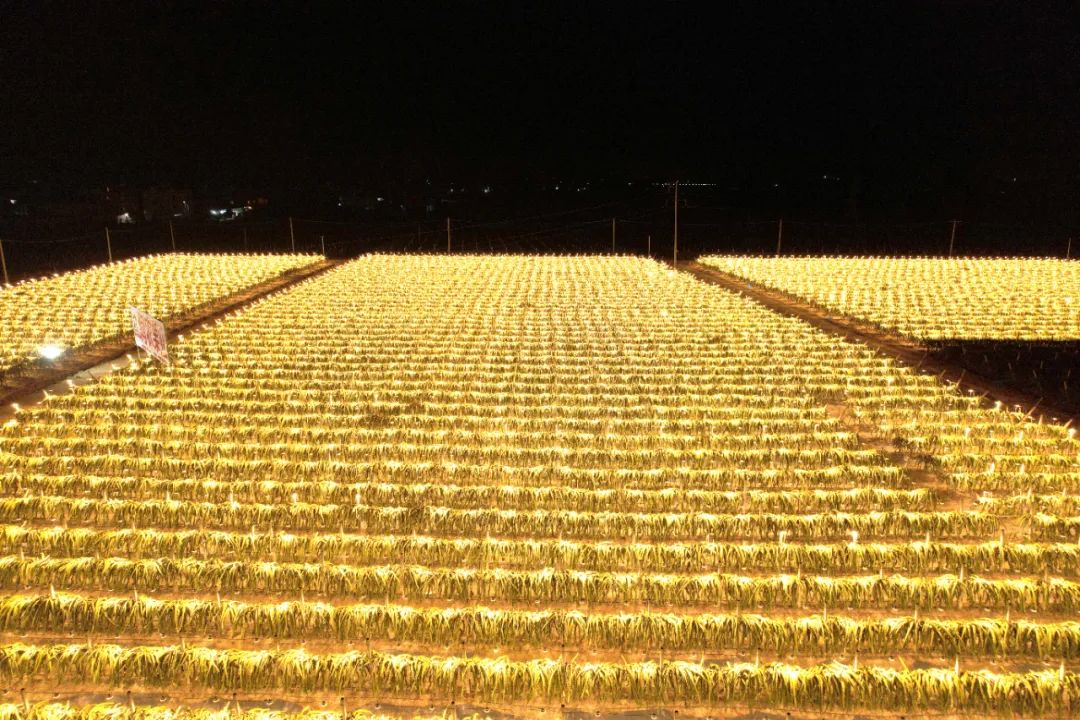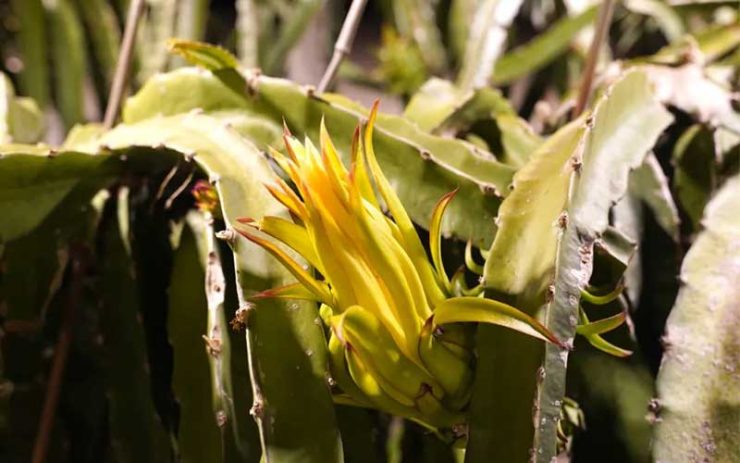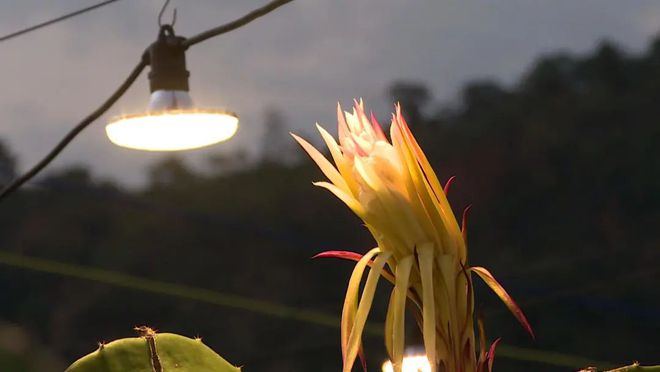The dragon fruit, also known as pitaya,is a light-loving tropical plant. It’s especially shade-tolerant.
Its growth requires strong light to blossom and bear fruit. The light in many areas is generally difficult to meet its growth needs, because it needs to receive minimum 12hours of light every day as to meet its growth needs.
(JiangSu Prov., China)
In South Asia winter period, if without led growth lights, most dragonfruits will not bloom after December. In Yunnan Province, China, only after 12 o’clock in winter, the sun breaks through the clouds and fog. In this condition, the light duration and intensity can not meet the demand of pitaya for flowering and fruiting.
In order to promote the off-season flowering and fruiting of pitaya, some farms use LED grow light technology to replenish light, adjust the fruiting time, increase the number of fruit bearing batches, and advance or delay the time to the market, which can improve the economic benefits of dragonfruit.
(YunNan Prov., China)
The techlogy of supplementation light has been widely used in the commercial cultivation and production of dragon fruit. In recent years, the technology of using light to prolong the production season has become increasingly sophisticated, and dragon fruit has achieved a year-round supply of fruit.
In South China, the dragonfruit bases can get 4-6 more batches of fruits in the off-season.
In addition, the flowering period of dragonfruits/pitaya is comparatively short. For the dragonfruits which is not self-pollinating, the help of grow lights at night is quite necessary. Because it blooms before sunset and closes after dawn, so pollination should be carried out before dawn. 
(GuangXi Prov., China)



 A LED lighting manufacturer as well as professional OEM vendor with abundant export experience.
A LED lighting manufacturer as well as professional OEM vendor with abundant export experience.